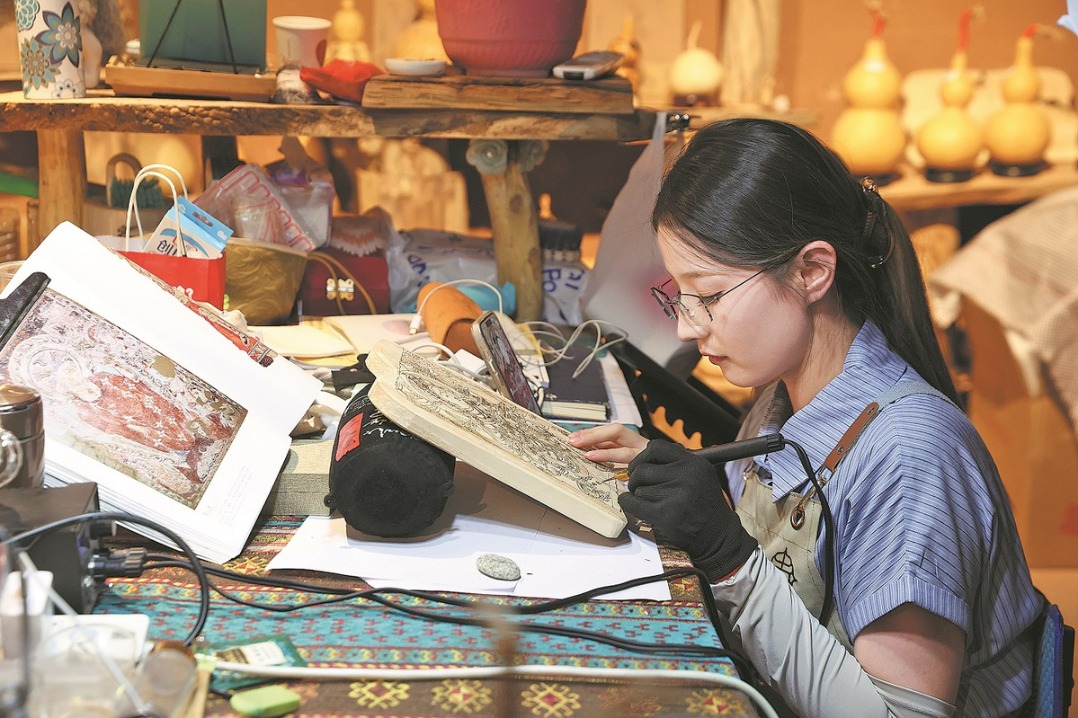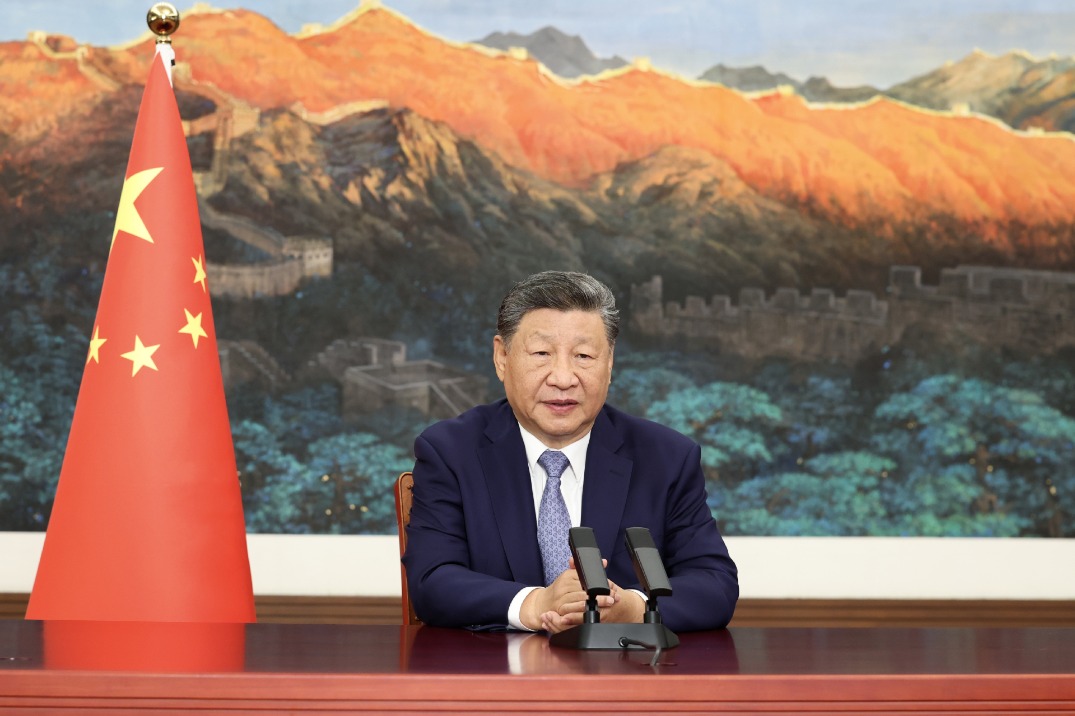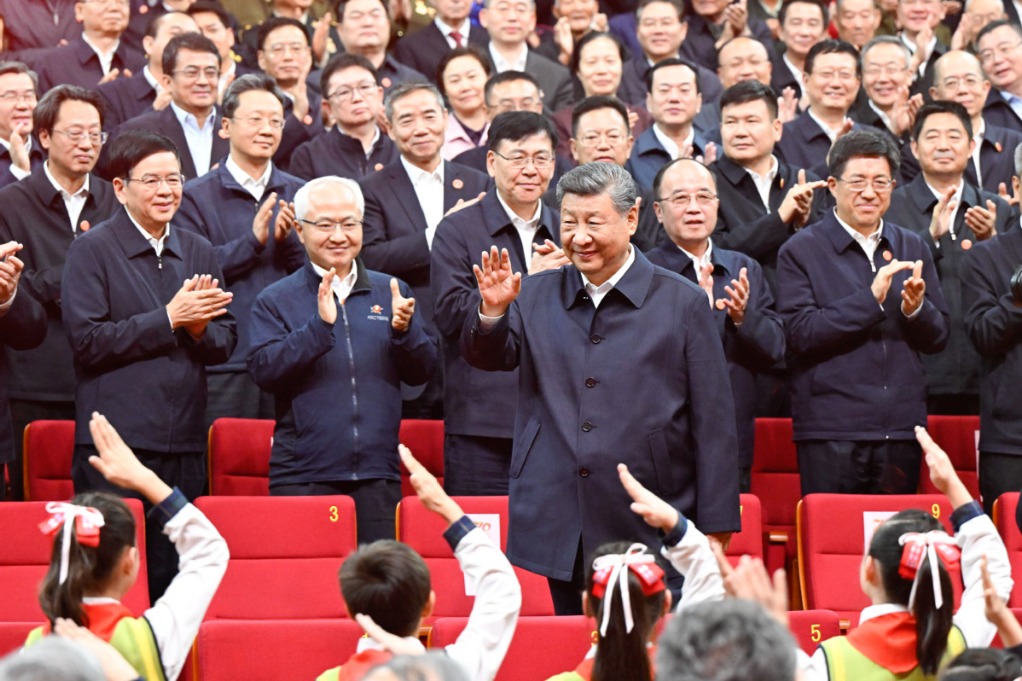The eternal attraction of a Chinese dragon
No creature, real or mythical, has exercised such a hold on the imagination over centuries, yet its origins are shrouded in mystery, Zhao Xu reports.


Further on in history, the Mongol people of the Yuan Dynasty channeled their love of the colors blue and white into porcelain making, creating fine china with patterns depicting blue dragons surging through rolling clouds or frothy waves. While the theme stayed popular for the next 600 years, a palette of vibrant hues was added during the Ming and Qing dynasties. The dragon, which may come in red or green, bursts through a multicolored background to assert its presence.
A dragon is always attuned to its day, culturally and aesthetically.
Perhaps the ultimate place for one to be overpowered, at least visually, by Chinese dragons is in the Forbidden City in Beijing, built in the early 15th century to serve as the royal palaces until the end of the Qing Dynasty in 1911. Its largest hall, in which enthronement took place, is adorned with more than 12,600 dragons. These include carved ones on the marble stone platform leading to the hall's entrance, painted ones wrapped around the giant wooden pillars sustaining the weight of the hall's immense roof, as well as molded and enameled ones standing on both ends of the roof's central ridge.
When a Ming or Qing emperor sat on his "dragon chair", a gilded wooden seat with 13 glistening dragons curling around every part of it, he would be doing so in front of a magnificent wooden screen seething with dragons, directly underneath an equally resplendent caisson ceiling from which the dragons cast down their deep gaze.
During heavy rain, water would gush from the mouths of the stone dragon heads protruding from the stone balustrades outside the hall. They still function today.
Tai He Dian, or the Hall of Supreme Harmony, was the name bestowed upon this place by the first Qing emperor who entered it. Given his background as a member of the ethnic minority Manchu from Northeast China, the man, only 7 at the time, and his court seemed to be fully aware of the thing that had held China together.
All that said, it would be wrong to associate a Chinese dragon solely with royalty. In fact, it is its celebration by folk culture that has guaranteed its place in the hearts of hundreds of millions. Newlyweds routinely decorate their windows and doors with paper-cuttings of a dragon and a phoenix. Dragon dances are performed in anticipation of fortune and fortuity during each Chinese Lunar New Year, on village squares, in shopping malls and along streets. On the fifth day of the fifth month of the Chinese lunar calendar, dragon boats are raced across the country's lakes and rivers in memory of one man: Qu Yuan (340-278 BC), a brilliant poet who was patriotic to the hilt, and who drowned himself in the land of his exile.
So what is a Chinese dragon after all? Throughout history, many have attempted to answer that question. Cao Cao, a warlord and poet who lived between the second and third centuries, compared a dragon to a man who adapts and acts on his chance — a hero, to use his term.
"A dragon can be both big and small; it can also go both high and low," he said. "When it is big, it announces its presence; when it is small, it conceals its existence. When it soars, it roams the cosmos; when it falls, it hides in colossal waves."
In a sense, he was echoing Confucius, who nearly seven centuries earlier had talked with a disciple about the transformative nature of a dragon: "A piece of cloud, snake, fish, bird, worm — a dragon can morph into anything it intends without becoming anything other than itself ... a manifestation of power and dignity, of honor and integrity, of strength and perseverance.
"Yet this profound changeability has often prevented it from being fully described, depicted or understood."
Contact the writer at zhaoxu@chinadaily.com.cn
























